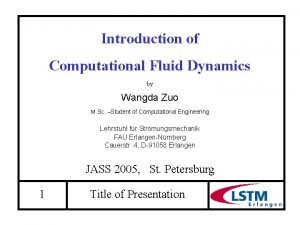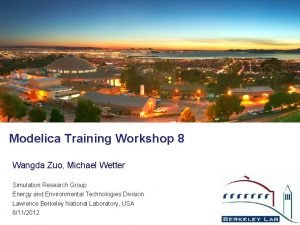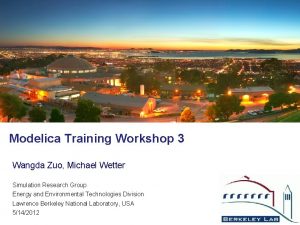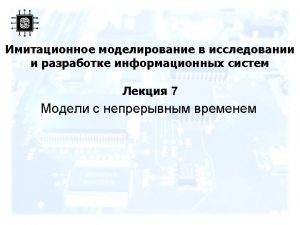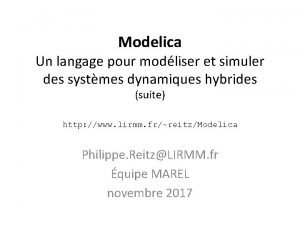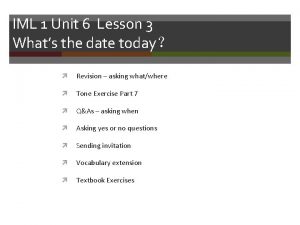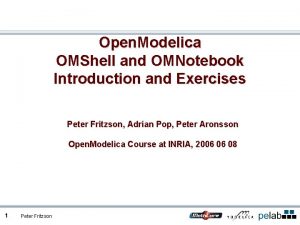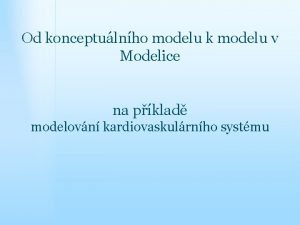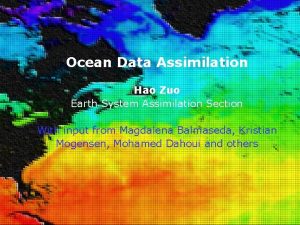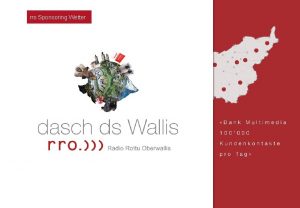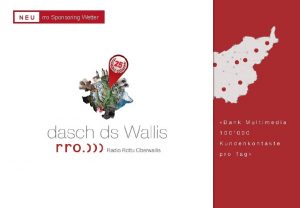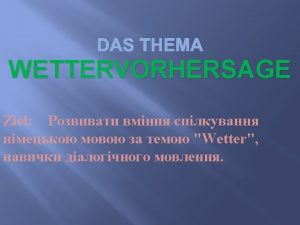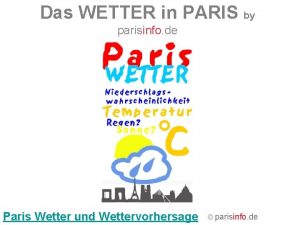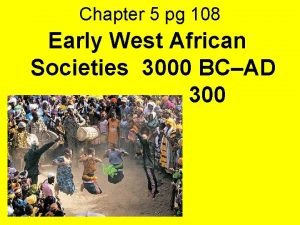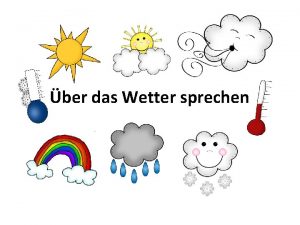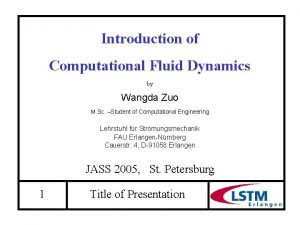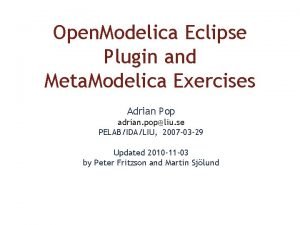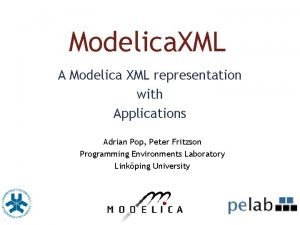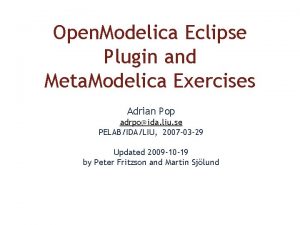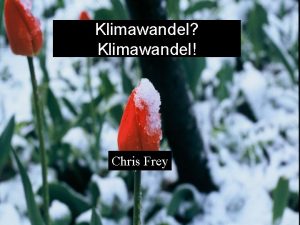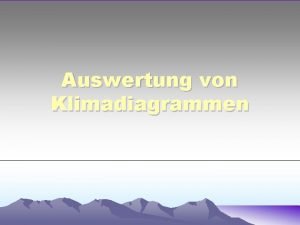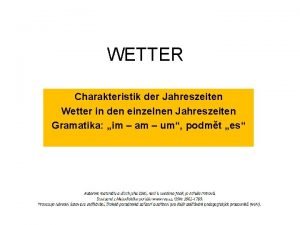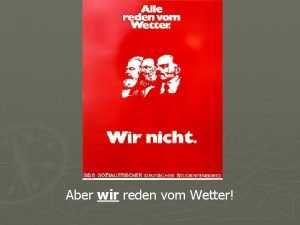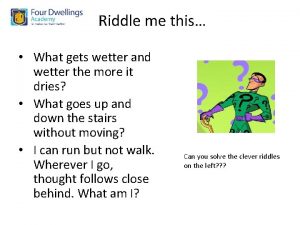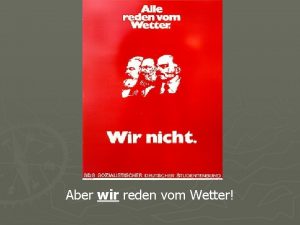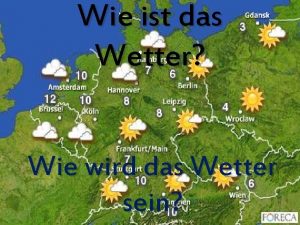Modelica Training Workshop 5 Wangda Zuo Michael Wetter
















- Slides: 16

Modelica Training Workshop 5 Wangda Zuo, Michael Wetter Simulation Research Group Energy and Environmental Technologies Division Lawrence Berkeley National Laboratory, USA 5/23/2012

Outline Part 1: Discrete Events and Hybrid Systems Part 2: Best Practice 2. 2 Build Large System Models 2. 3 Propagating Parameters and Media Packages Workshop Website: https: //simulationresearch. lbl. gov/modelica/Work. Shops/2012 -05 -07 -lbnl 2

Exercise 1 model ifwhen Real x; Real y; Real z; equation x = time; when x >5 then y = x + 1; end when; if x > 5 then z = x + 1; else z = 0; end ifwhen; 3

Part 2: Buildings Library 2. Best Practice (Continued) 2. 2 Build Large System Models 2. 3 Propagating Parameters and Media Packages 2. 4 Thermal-fluid systems 4

2. 2 Build Large System Models How to solve not well-posted or over-specified problem when building a large complex system 1. Split the large system into small independent components 2. Test the small component with well controlled conditions. Example: Buildings. Examples. Chiller. Plant. Base. Classes. Controls. Examples - KMinus. U Calculated with equations - Request. Counter Uses algorithm Commands->Simulate and plot 5

2. 3 Propagating Parameters and Media Packages Always define the value of common parameter at the top level of the model Bad Practice Good Practice 6

2. 3 Propagating Parameters and Media Packages Always define the value of common media package at the top level of the model Top System Model Sub-system Model that uses Sensor model Sensor Model 7

2. 3 Propagating Parameters and Media Packages Common parameters: Nominal flow rate for air loop, chilled water loop and condenser water loop Common media packages: Air, Chilled water, Condenser water Chiller plant with water-size economizer 8

2. 3 Propagating Parameters and Media Packages Find where these parameters and Medium packages are used: Nominal Flow Conditions: air loop: m. Air_flow_nominal chilled water loop: m. CHW_flow_nominal condenser water loop: m. CW_flow_nominal Common media packages: Air: Medium. Air Chilled water: Medium. CHW Condenser water: Medium. CW 9

2. 3 Propagating Parameters and Media Packages Find the path of propagating (e. g. Heat Exchanger): 1. System model m 1_flow_nominal=m. CW_flow_nominal, 2. Buildings. Fluid. Heat. Exchangers. Constant. Effectiveness m 1_flow_nominal 3. Buildings. Fluid. Heat. Exchangers. Base. Classes. Partial. Effectiveness m 1_flow_nominal 4. Buildings. Fluid. Interfaces. Static. Four. Port. Heat. Mass. Exchanger 5. Buildings. Fluid. Interfaces. Partial. Four. Port. Interface 10

2. 3 Thermal-fluid System Source and Boundary Condition 11

2. 3 Thermal-fluid System Source and Boundary Condition Step 1 • Modelica. Fluid. Sources. Mass. Flow. Source_T, • Buildings. Fluid. Mixing. Volumes. Mixing. Volume • Buildings. Fluid. Sources. Fixed. Boundary, Step 2 • Define the parameters Step 3 • Check the grammar • Compile and run simulation (need license) 12

2. 3 Thermal-fluid System Model Fluid Junction Correct Wrong 13

2. 3 Thermal-fluid System Thermal Expansion of Water 14

2. 3 Thermal-fluid System Thermal Expansion of Water Expansion Vessel Fixed Pressure BC 15

2. 3 Thermal-fluid System Nominal Values • Parameters for the nominal operating conditions. • Value set to component typically have if they are run at full load or design conditions 16
